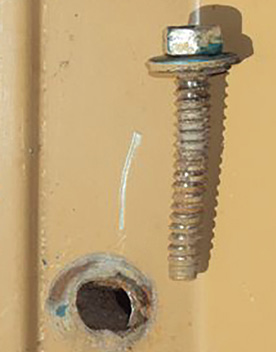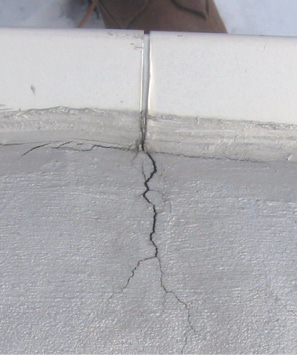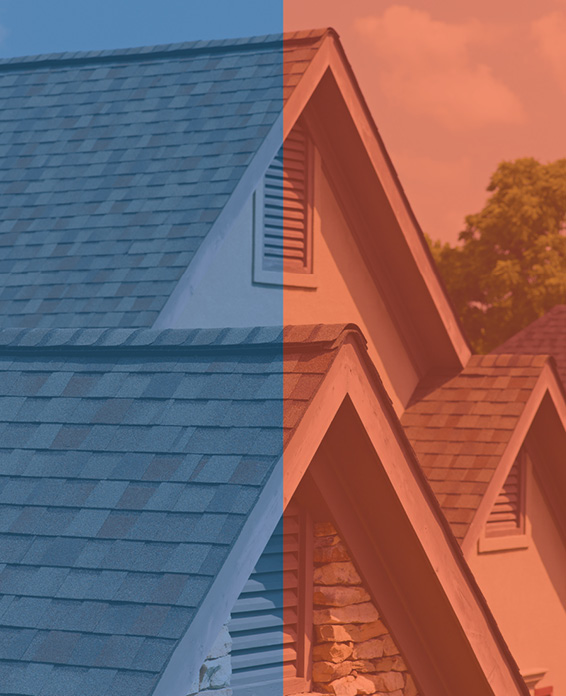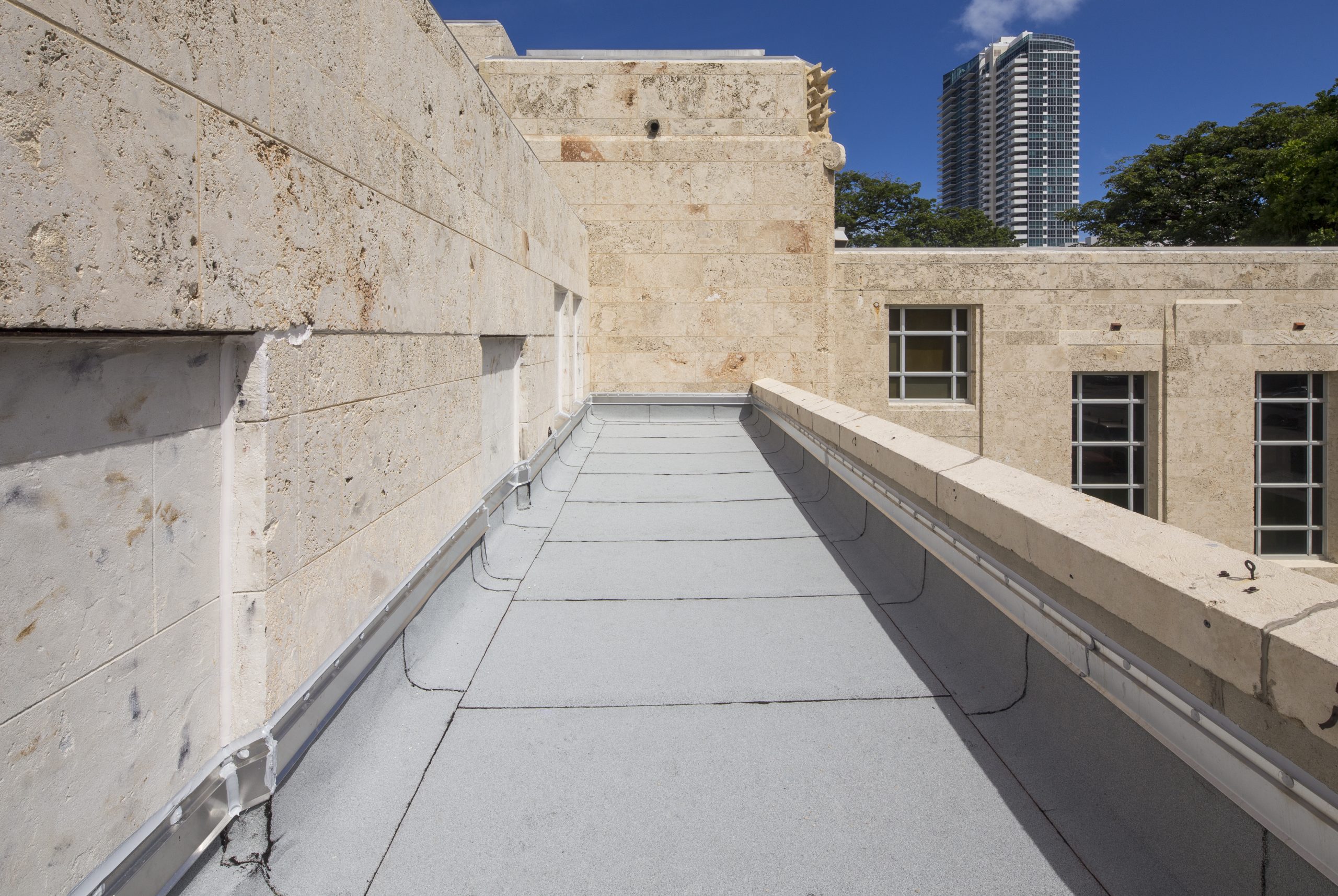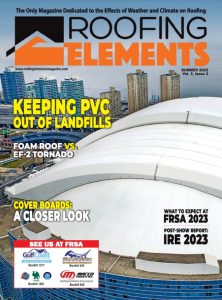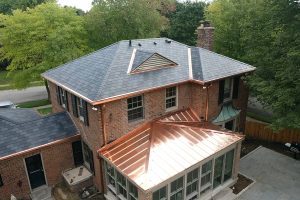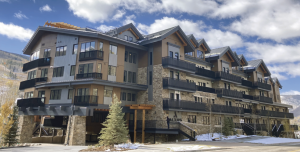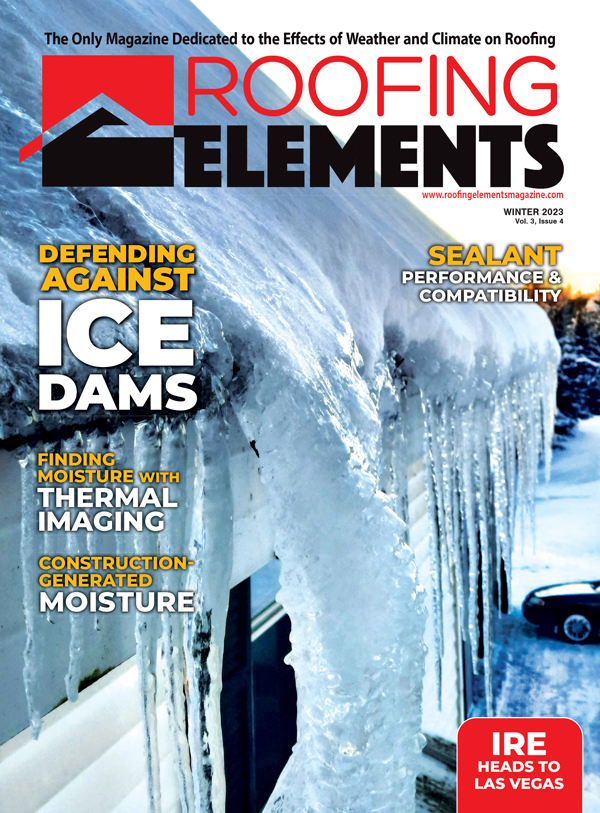The Expansion and contraction of
roofing materials
BY JESSICA FRANCHUK
Every roof on every building is subject to the elements: sun, rain, wind, and temperature shifts, to name just a few of the more “normal” weather events. Roofing manufacturers have subjected their products to testing against hurricane-force winds, hail damage, and more to create the most resilient offerings on the market. But what about the standard day-to-day elements that a roof protects against? Manufacturers (and contractors) must also factor them into roof design and installation. Here, we introduce the basics of thermal cycling and how it affects roofing materials.
Important Considerations
The National Research Council Canada, where they experience rather drastic temperatures, explained the importance of accounting for thermal cycling: “Durability or service life of a roof is to a large degree dependent upon the temperatures it experiences. A knowledge of the thermal response of materials, the variations and extremes of temperature, and how to modify or compensate for them, is essential for the design of durable roofs.” Extreme temperatures in either direction have a major effect on the performance and lifespan of every roof type. If a house or building is small enough, the thermal expansion and contraction of the roof is negligible (though still a concern), but for large, expansive roofs, the annual temperatures of its specific location need to be carefully considered during roof design.
Josh Jacobi, National Manager/Technical Services for Petersen Aluminum Corporation, advised: “All materials used in roofing have different expansion coefficients. As you consider materials you’ll be using, you need to also plan for a 100°F temperature change. [In most climates], roofs go through a weathering cycle over their lifespan (not a 100°F temperature change in a single day). Think about the overall temperature cycle from seasonal shifts. For example, if you have a 100′-long steel roofing panel, you need at least 2″ of eave hem—this is called thermal clearance, and is necessary because a 100′ steel panel will move, elongate, and expand as much as a full inch throughout the length of the panel. You have to leave room for that growth, and you also have to leave room for shrinkage in extreme temperatures.”
Thermal cycling needs to be taken into account during the roof design process, as well as throughout bidding/estimating. “I would suggest including the discussion on thermal movement of panels and trim as part of the design—but being the low bid on a project with obvious design issues will create a result where no one wins,” said Ken McLauchlan, Director of Sales & Business Development for Drexel Metals. He continued, “Involvement of a reputable manufacturer is important, but the design team ultimately carries the errors and omissions insurance to cover construction defects. All buildings expand and contract, however, not all systems are designed to expand and contract with them. There are limitations for all products; identifying the end goal and how to achieve it is the true challenge.”
Words of warning
You might be wondering why this matters—surely the products have been tested and will expand or contract as needed without much thought on my part? Well, yes they have been tested, but there is still room for error. Jacobi said, “I’ve seen a large number [of errors] from the installer’s standpoint. We have photographic examples that show some failed conditions from not accommodating for thermal expansion. The roof grew too much and became disengaged from the trim; when it contracted in colder weather, the ends of the panels were mangled and disfigured at the eave hem. We’ve also seen roofs completely tear themselves apart because [the contractor] ran panels too long with a fixed clip that didn’t allow the panel to move.” In these cases, the manufacturer had specifications for installation and temperature considerations, but the panels were installed in a manner that didn’t allow them to function properly.
McLauchlan added his own words of warning: “Expansion and contraction is present in all roofing products, not just metal. I have personally witnessed fracturing in aluminum products from being installed in cold temperatures with a fixed application method, which then expanded in the hotter season and induced fracturing. Then there is the additional wear on a product that is under this type of strain or stress, when a roof is installed without expansion built into the panel system itself (or if it is unintentionally taken away by the installation method).” Travis Lord, Product Manager—Adhesives & Metal for The Garland Company, agreed that the strain or stress a roof undergoes due to temperature shifts can cause future issues when not properly planned for: “On all types of roof systems, expansion and contraction will cause friction at details that are not designed to account for the movement. Over time, that will cause breaks in the waterproofing. In designing a full roofing system, from edge to edge, the possible movement of the materials should be considered.”
This brings up the issue of waterproofing problems due to temperature changes, including at the time of installation. Lord added: “Most (non-metal) roofing products are designed to be installed at ambient temperatures of 40°F and above. As temperatures dip below that threshold, installation can become difficult and dangerous for the life expectancy of a roof. For instance, some modified bitumen membranes are not designed to have a low temperature flexibility. If a membrane is stored outside or is installed in temperatures lower than its specifications, it can lead to cracking of the membrane, leading to the potential for leaks.” A similar issue can occur with asphalt shingles, leading to cracks, loosened shingles, and overall deterioration of the roof. Alex Pecora, Director of Product Management for CertainTeed Roofing, commented: “When discussing shingle selection [with homeowners], be sure to explain the properties the shingle includes. In addition to withstanding expansion and contraction, some asphalt shingles will include important attributes that help protect roofs from elements like hail, algae growth, and UV rays, and provide enhanced leak protection.”
In a nutshell, temperature changes can lead to big problems for all roofing types and must be considered during the planning, design, and installation of the roof.
Steps to Take
As evidenced by the fact that there are plenty of roofs that have held their own against the high and low temps in variable climates, there are ways to account for and handle these temperature shifts. Regarding metal roofing, Jacobi said, “Depending on the exact thermal expansion, the type of clip you use makes a big difference on proper performance of a roof assembly. Most standing seam panel systems are designed with floating clip assemblies to allow for movement—it’s important to consider the longest panel lengths and make sure the clips and components within the assembly will accommodate the maximum thermal expansion/contraction. It is extremely critical to monitor the thermal expansion/contraction and temperature changes within the region to make sure whatever profile panel you’re using will perform.”
Many roofing systems have built-in thermal movement/expansion planning, which often includes the fasteners and/or components needed for a complete roofing assembly. Andrew Mullen, President of Direct Metals Inc., specified: “Due to temperature variations, fasteners and metal panels expand or contract in different ways, depending on the rate of temperature change, the size, conductivity of metals, and the coefficient of expansion of each individual material. These differences in relative expansions or contractions between materials may create premature fastener wear or back-out (withdrawal) from the substrate.”
Lord added, “It can’t be stressed enough, but following a manufacturer’s installation guides is extremely important as well. These guides will let installers know the exact temperatures the products can be installed to.”
This is just the tip of the iceberg when it comes to the topic of thermal cycling and roofing, so keep your eyes peeled for future editorial coverage. If you have specific questions related to thermal cycling that you wish to be covered in future articles, please email the editor at [email protected].
